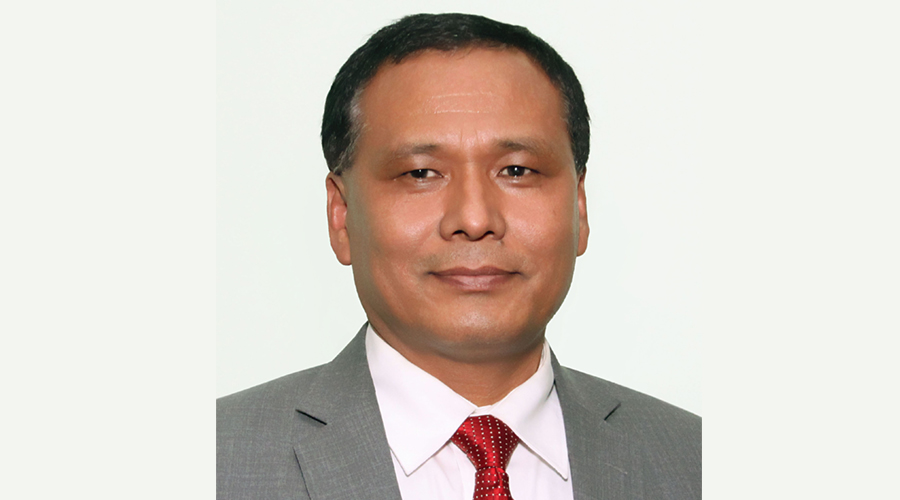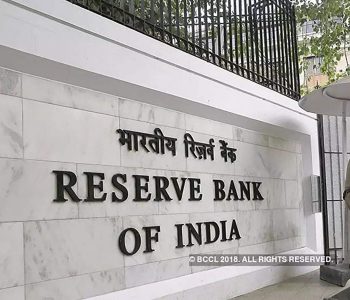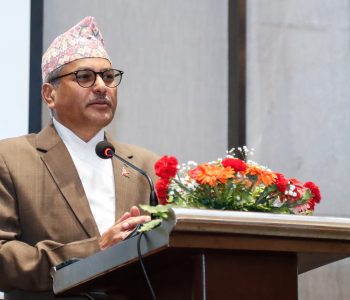Ghising’s four years at NEA: Regularity in power supply brightens utility’s profit outlook

KATHMANDU: At a time when the country was facing extreme instances of load-shedding the government decided to appoint Kul Man Ghising as the managing director of Nepal Electricity Authority (NEA) on September 16, 2016. It was a time when people had to bear with 14 hours of load-shedding every day. People usually use their electrical or electronic appliances as per need but the situation was such that we had to use our devices depending on the availability of electricity.
Back then the country’s electricity grid connection capacity stood at only 800 megawatts which has significantly increased to 1,400 megawatts at present. And it has been three years since the end of load-shedding in the country.
But people have become apprehensive in recent days and are scared they might have to go through long hours of load-shedding again as Ghising’s four-year tenure will soon expire on September 14 and the government has not made any announcement about whether Ghising will be allowed to continue at the helm of NEA.
As per NEA’s data, the number of customers that the public utility had never exceeded the three-million mark for a period of 31 years. However, during Ghising’s tenure the power utility has been able to add 450,000 new customers annually. Within the last four years NEA has added over 1.8 million new customers and today boasts of a customer base of 4.8 million subscribers.
Apparently, NEA has been able to add nearly 40 percent of the total customers since Ghising’s appointment.
Similarly, power consumption in the industrial sector, which was at 31 percent four years ago, has now reached approximately 40 percent. Along with the increase in consumption in the industrial sector, NEA’s leakage has reduced by 10 percent to 15 percent while revenue has increased by 115 percent.
Access to electricity, which was only 62 percent of the population, has now reached 90 percent in a span of four years.
To add to his accomplishments, during Ghising’stenure more than a dozen sick projects have been completed. Meanwhile, construction of the 30 MW Chameliya, 60 MW Trishuli-3A and 14 MW Kulekhani-3 hydropower projects has been completed. The 456 MW Upper Tamakoshi, 111 MW Rasuwagadhi and 57 MW Sanjen hydropower projects will also be completed within the current fiscal year.
Similarly, construction work of the 40 MW Rahughat, 140 MW Tanahu and 37 MW Trishuli-3B projects have also started.
Furthermore, the 132 kVA Kabeli Corridor and 132 kVA Attaria-Darchula, 220 kVA Khimti-Dhalkebar, 220 kVA Matatirtha-Trishuli,132 kVA Kataiya-Kushahaand 132 kVA Raxaul-Parwanipur transmission lines have also been completed during Ghising’s tenure.
According to NEA, construction of 4,275 circuit kilometers of transmission lines has been completed in four years. The transmission network, which had a total of 2,900 circuit kilometers in the previous 30 years, has reached 4,275 circuit kilometers in four years. In just four years, an additional 50 percent of the transmission network has been added. On the distribution side, more than 10,500 circuit kilometers have been completed so far.
The capacity of the substations has also been enhanced. New connections have been constructed and 1,000 small and large substations have either been built or upgraded.
Meanwhile, about 12,000 transformers have been added to the system to generate up to 2,000 MW of electricity.
Moreover, the work of laying electric wires underground has already started in Kathmandu Valley. The work of installing smart metershas also been initiated.
Electricity export to India has been partially resumed in the wet season and necessary infrastructure for electricity trade is being prepared.
The COVID-19 pandemic at the end of his tenure did dent some of Ghising’s targets and some projects which had been started have not been completed. One such target which has not been completed is to supply quality electricity after the end of the load-shedding regime.
Meanwhile, the campaign to digitalize NEA has been successful and the power utility has now developed technology that can do 90 percent of the work online. For example, consumers can now pay their electricity bills through an online mechanism by checking the metersinstalled at their homes or workplaces.
Though Ghising has been lauded for the many bright initiatives that he has undertaken he has not been free from controversy. One such controversy that he has had to face was when he took the initiative to procure LED bulbs from India through the G2G process without opting for an open competition bid process.However, Ghising has clarified time and again that he had acted without any bad intention and is willing to face any consequence if found guilty. The LED bulb procurement process in the meantime has stalled.
One of the biggest embarrassments for Ghising has been the controversy related to the dedicated feeder and trunk line. The NEA had recently directed all the large industries that had been getting regular electricity supply even during load-shedding in the name of dedicated and trunk lines to pay billions of rupees in electricity bills that had accrued since 2015.
The power utility pointed out that some industries had paid the regular tariff even though they had availed the service on condition that they would pay more for the electricity consumption during load shedding.
However, industrialists have alleged that the electricity bills were sent to them years after the load-shedding ended and moreover the bills were also inflated.Some industries have been stating that they had never applied for trunk or dedicated lines and even when they had not consumed such electricity they have been billed tens of millions. One such businessman stated that it was an injustice having to pay such a huge electricity bill.
Although the Cabinet tried to resolve the dispute by forming a study committee, it has not been resolved yet. Ghising has been accused of not billing industries in a timely manner and failing to resolve the issue.
Another milestone that Ghising has achieved is in being able to reduce the import of electricity from India. Till last year Indian electricity import accounted for a large share of Nepal’s energy consumption but now as domestic production increases, electricity import isexpected to gradually decline further.
With the addition of more number of customers, the rate of electricity consumption has also been increasing since the last one year. Despite the increase in demand for electricity the dependence on Indian electricity is gradually shrinking.
One of the perennial problems that NEA faced in the past was electricity leakage which caused it to lose millions in revenue. Prior to Ghising’s appointment there was leakage of 25.78 percent in the central power grid system in fiscal year 2015-16. This basically meant that a quarter of the electricity generated was going to waste.
In the first year of his tenure, Ghisingmanaged to reduce electricity leakage by about three percent. By last fiscal year 2019-20, electricity leakage was limited to 15.27 percent.
What has to be noted is that when even only one percent of electricity leakage is controlled NEA stands to make a profit of Rs 700 million. Taking that figure into account the power utility was able to generate resources worth Rs seven billion during Ghising’s tenure.
There are basically two types of leakages in the transmission system. The first type is technical leakage whereby electricity is wasted during its transmission due to problems in the wires, transformers or conductors, among others. The other leakage is electricity theft.
After Ghising came to power, NEA launched a nationwide campaign to control power theft. What came to the fore was that not only was power being stolen by individuals hooking up to bare electric wires but big commercial consumers too were involved in electricity theft in connivance with NEA employees. To prevent thisGhising transferred about 2,500 employees of NEA’s distribution system at once in January 2016.
As a result, NEA, which had a deficit of billions of rupees in previous yearswas able to clock a profit of Rs 1.47 billion in fiscal year 2016-17, Rs 2.85 billion in fiscal 2017-18 and Rs 9.81 billion in fiscal 2018-19. NEA’s accumulated profits stood at around Rs 11 billion in the last fiscal year and it has become the most profitable public institution for the last two consecutive years.














Facebook Comment